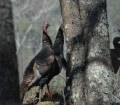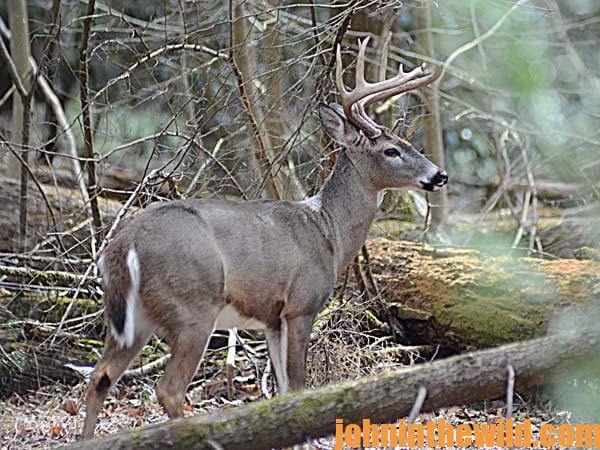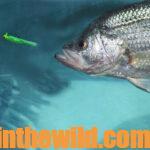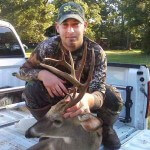John’s Note: Can you spot a turkey’s head as the bird comes through new foliage? Too, can you quickly and easily identify whether or not the bird has a beard? Can you see a deer fast and get off a clear shot before it vanishes in thick brush? While bowhunting with Travis Fryman, well-known professional baseball player and winner of several batting awards in the national leagues, I asked, “How do you see a baseball being thrown toward home plate at 90 mph?” Fryman answered, “I can see the ball and even the stitches on the ball and know which way those stitches are turning.” With that knowledge, in less than a fraction of a second, Fryman could determine when to swing his bat and where to hit the ball. Fryman had sharpened his vision skills through exercises. When a pro quarterback has called a pass play, he must be able to see each of his wide receivers as they run down and across the field and determine which receiver to throw the ball to complete the pass before he’s tackled. Too, the faster you can identify a turkey or a deer as it moves through the woods, the quicker you can mount your rifle or shotgun, aim and shoot accurately. There are ways you can speed up your reaction time by developing your vision skills. No matter how good someone’s basic visual abilities are, they can be enhanced. You can start now to improve your spring turkey season and fall and winter deer season success by developing your visual skills.
Two doctors researching sports-vision skills for the American Optometric Association, Dr. Gary Etting and Dr. Don Getz, have worked with the U.S. Olympic Trap and Skeet Team, the U.S. Olympic Men’s Volleyball Team, the American Soccer League and others to improve these teams’ abilities to see more quickly and then to react properly to what they’ve seen.
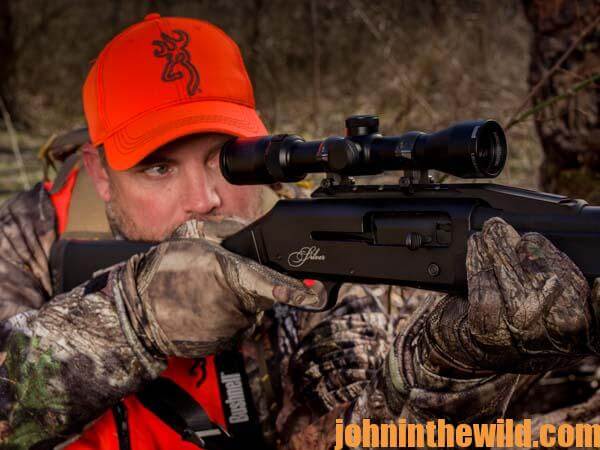 “Being able to see deer in the woods, distinguishing bucks from does, perceiving direction of flight, and then reacting quickly enough to take a shot are learned skills that can be developed and improved,” Dr. Etting explains. “People who are able to do this naturally usually have learned to see better than others and have more experience using their visual systems than others do. But no matter how good someone’s basic visual abilities are, they can be enhanced.”
“Being able to see deer in the woods, distinguishing bucks from does, perceiving direction of flight, and then reacting quickly enough to take a shot are learned skills that can be developed and improved,” Dr. Etting explains. “People who are able to do this naturally usually have learned to see better than others and have more experience using their visual systems than others do. But no matter how good someone’s basic visual abilities are, they can be enhanced.”
When I asked Dr. Etting why some hunters cannot see deer or turkeys in the woods, even when they are as close as 20 yards away, he explained that several skills are required to perform this task. “First of all, we have to assume that a hunter can see clearly – with or without glasses. Then he must use clues from the environment to help him discriminate the deer or the turkey from the background. This discrimination process must happen quickly.”
 One of the clues the deer hunter should look for is a line parallel to the ground, about 3- to 4-feet high. A hunter who sees this may be looking at a deer’s back. The hunter must then rapidly take in other information from the scene to confirm that it is a deer. So, he should learn to rapidly recognize the twitching of a deer’s ear, the sun dancing off an ivory-colored antler, a leg protruding from behind a tree and/or the swishing of a deer’s tail. A turkey hunter must know what a gobbler sounds like when he’s walking, be able to distinguish the shape of a tom’s head as compared to the shape of a hen’s head, be able to spot the turkey’s beard and pick out one of the wattles on a turkey’s neck as an aiming point – while judging his distance from the gobbler.
One of the clues the deer hunter should look for is a line parallel to the ground, about 3- to 4-feet high. A hunter who sees this may be looking at a deer’s back. The hunter must then rapidly take in other information from the scene to confirm that it is a deer. So, he should learn to rapidly recognize the twitching of a deer’s ear, the sun dancing off an ivory-colored antler, a leg protruding from behind a tree and/or the swishing of a deer’s tail. A turkey hunter must know what a gobbler sounds like when he’s walking, be able to distinguish the shape of a tom’s head as compared to the shape of a hen’s head, be able to spot the turkey’s beard and pick out one of the wattles on a turkey’s neck as an aiming point – while judging his distance from the gobbler.
However, the ability to see turkeys and deer in the woods or the fields is only a part of a hunter’s visual skills. Another skill critical to successful hunting is reaction time, which Dr. Etting defines as, “How quickly the hunter can detect the location and the size of the target and the direction and the rate of its movement and then respond by bringing his gun to the shooting position.” You can determine the location of the target by looking at portions of the turkey or the deer or by watching for signs of movement. How big the turkey or the deer looks, however, is affected by distance as well as actual size. If you see a 250-pound deer at a distance, the image transmitted by eyesight is that of a smaller deer. Vision, however, factors in the distance and tells you that the deer is indeed a trophy.
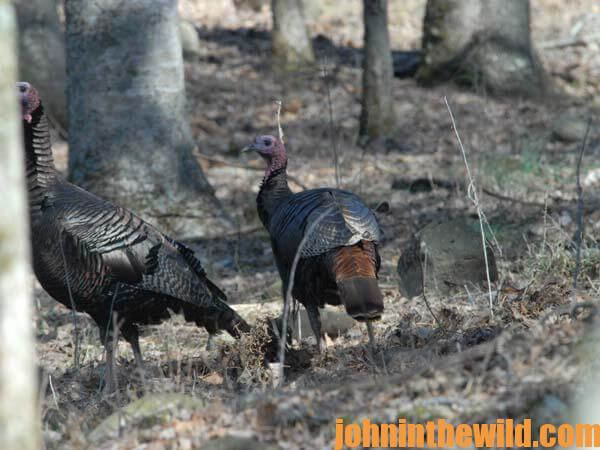 You must allow your vision system to override your perception system to accurately calculate a shot. You can use a range finder or can pace off the distance to objects to check your ability to estimate sizes from far away. Too, deciding the relative speed of a fleeing deer or turkey and bringing the gun to a shooting position requires conscious coordination of both eyes. If you’re following a deer or a turkey with only one eye, aiming becomes difficult. Dr. Etting gives this example: “A man who drives a wagon that is drawn by two horses – one a carriage horse and the other a racehorse – has tremendous problems. He has so much trouble keeping the two horses pulling together that he has difficulty staying on the road and seeing where he’s going, or where he’s been. A hunter may have this same problem with his eyes. One eye may tend to wander from the target, while the other eye tries to concentrate on it. Then when these two separate signals arrive in the brain, there is confusion and double vision. The brain will turn off one eye or the other to avoid the confusion. Hunters with this problem will judge game to be either more to the left or more to the right of where it actually is. However, since these functions happen subconsciously in the hunter’s visual and mental systems, he realizes only that he’s missed the game.”
You must allow your vision system to override your perception system to accurately calculate a shot. You can use a range finder or can pace off the distance to objects to check your ability to estimate sizes from far away. Too, deciding the relative speed of a fleeing deer or turkey and bringing the gun to a shooting position requires conscious coordination of both eyes. If you’re following a deer or a turkey with only one eye, aiming becomes difficult. Dr. Etting gives this example: “A man who drives a wagon that is drawn by two horses – one a carriage horse and the other a racehorse – has tremendous problems. He has so much trouble keeping the two horses pulling together that he has difficulty staying on the road and seeing where he’s going, or where he’s been. A hunter may have this same problem with his eyes. One eye may tend to wander from the target, while the other eye tries to concentrate on it. Then when these two separate signals arrive in the brain, there is confusion and double vision. The brain will turn off one eye or the other to avoid the confusion. Hunters with this problem will judge game to be either more to the left or more to the right of where it actually is. However, since these functions happen subconsciously in the hunter’s visual and mental systems, he realizes only that he’s missed the game.”
To get John’s book, “The Turkey Gobbler Getter Manual,” for free, go to www.johninthewild.com/free-books to download.
To learn more about John E. Phillips’ eBooks and print books on hunting turkeys and deer, click here.

